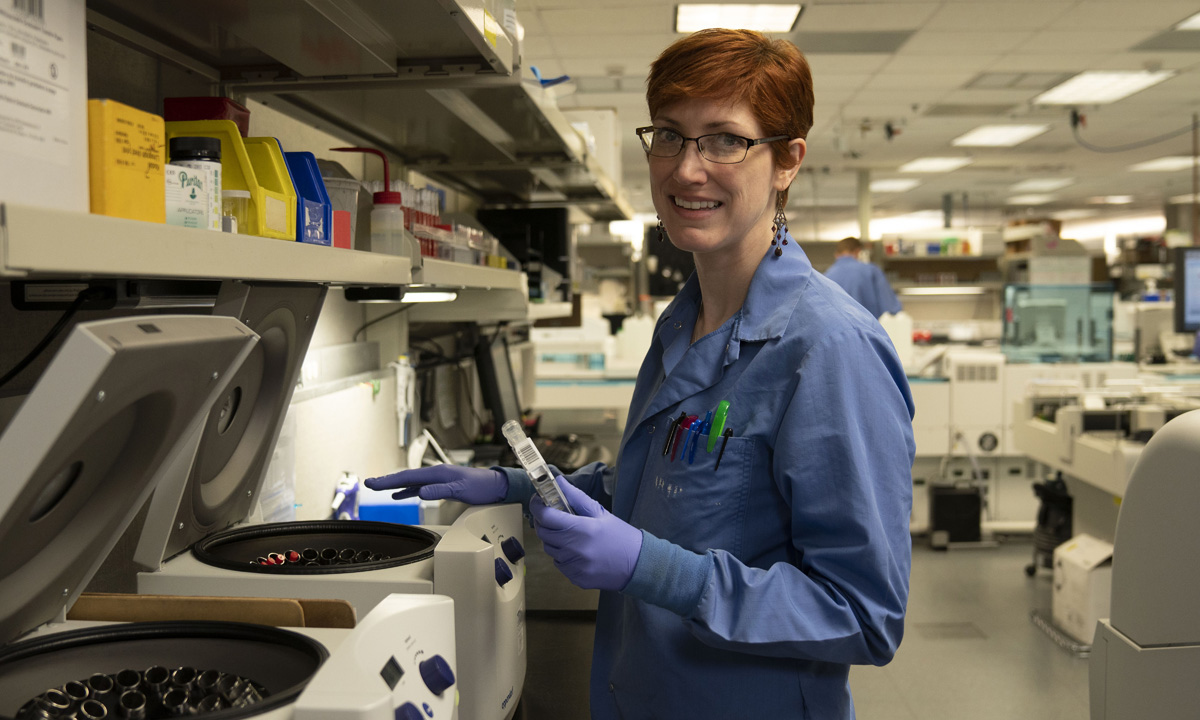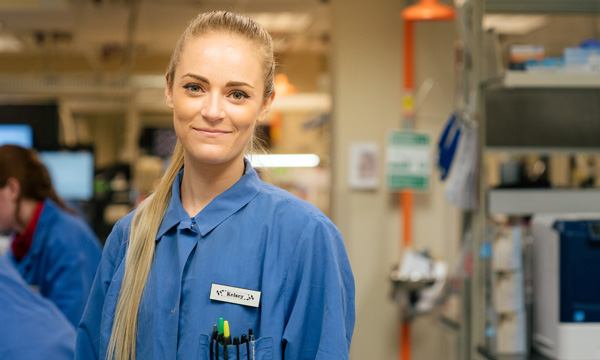
“The exposure students will get from this biotech program, will help them make informed decisions,” says Meredith Ford, a technician in the ARUP’s Core Lab.
It’s a win-win-win scenario involving students, Salt Lake Community College (SLCC), and ARUP Laboratories. A National Science Foundation grant ($819,000) was awarded to SLCC’s biotechnology program to fuel their competency-based education* efforts. Some students graduating from the college’s two-year biotech program will go on to become medical technologists in laboratories.
For receiving the grant, it was advantageous to partner with three biotechnology companies to ensure students are well prepared for the workforce. The three companies include ARUP, BioFire Diagnostics, and Nelson Laboratories.
“The true test of our success is how well our students are doing in the industry,” says Mary Nelson, PhD, SLCC’s Director of InnovaBio. “We want to make sure students are getting what they need to succeed and that companies like ARUP are getting what they need to fill positions.”
“For the grant, we looked to establish partnerships with companies that are growing the fastest,” says Jean Bower, principal investigator on the grant. She adds that they hope to attract workers who are already working in the biotech industry and have some skills but want to further them.
Different Lab Jobs for Different Personalities
ARUP’s Meredith Ford, a technician in the Core Lab, and Kelsey Volk, a blood component specialist, attended a one day facilitated workshop, along with employees from BioFire and Nelson, to field questions and provide information and insight into the skills and life of a laboratory specialist. They also took away new realizations.
Kelsey Volk“We let them know it can be a stressful job, and that although you are not working directly with patients, their lives are still at the other end of each test. So what you do, and doing it well, is incredibly important. You are still connected to the patient.”
ARUP Blood Component Specialist
“Even though we all came from labs where we might do different things, we exposed them to concepts and ideas that could be applied to any of our different labs,” says Ford. “It was clear that there is a lot of variety within this field and that this program will help introduce students to what’s available so they can find what best fits their strengths. “
The representatives from the three laboratories were given a general job description for a lab tech and then questioned on what daily tasks, safety procedures, and terminology that students should know. They also discussed how the different paces of each lab would fit some personalities better than others; for example, a slower-paced, research-oriented lab versus a hospital lab where results are needed within hours.

“We let them know it can be a stressful job, and that although you are not working directly with patients, their lives are still at the other end of each test,” says Volk. “So what you do, and doing it well, is incredibly important. You are still connected to the patient.”
When SLCC first approached Johanna Barraco, ARUP director of human services, she saw several opportunities. One was to be recognized by the community as a centralized reference laboratory (including 70 individual labs) not just as a blood donation center. The second was to keep up with ARUP’s rapid growth; its workforce is growing up to 10 percent a year, with more than 500 positions filled in the past year.
The third opportunity? Competency. “SLCC is focusing on competency and so are we,” says Barraco. “We have to measure the competency of our employees all the time in all of our labs as required by multiple regulatory bodies. For students coming from this program, we can continue to build on their entry-level skills to prepare them for future opportunities here.”
*Competency-based education allows students to demonstrate competencies at their own pace, moving on to the next course as soon as they are ready. Tuition is paid in an “all you can learn” subscription model, so students can save money if they accelerate their progress.
By Peta Owens-Liston, ARUP Science Communications Writer
















